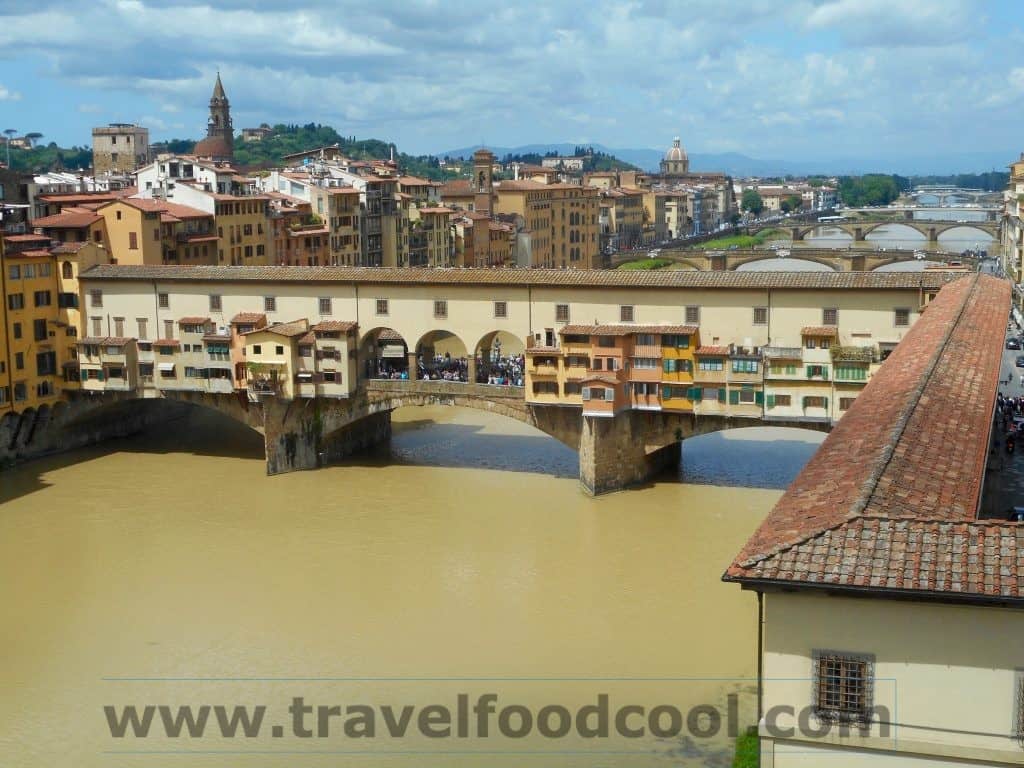
The Vasari Corridor was completed in 5 months by Giorgio Vasari as a surprise for the guests attending the wedding of Johana of Austria to Giovanni, son of Grand Duke Cosimo I. It was used as a passage between the Uffizi (the family offices) and the Pitti Palace (the family home). It was also used as a way to eavesdrop on the masses below.
Who were the people behind the Vasari Corridor?
The Grand Duke of Tuscany, Cosimo I, was the ruler of Florence. The de’ Medici family had a long history of patronage of the arts (they sponsored Michelangelo, Botticelli and Da Vinci), education and architecture. Besides the wedding surprise, Cosimo may have had an additional motive to create the tunnel. As the tunnel connected his house with his office, he could bypass traffic and not have to worry about the elements.
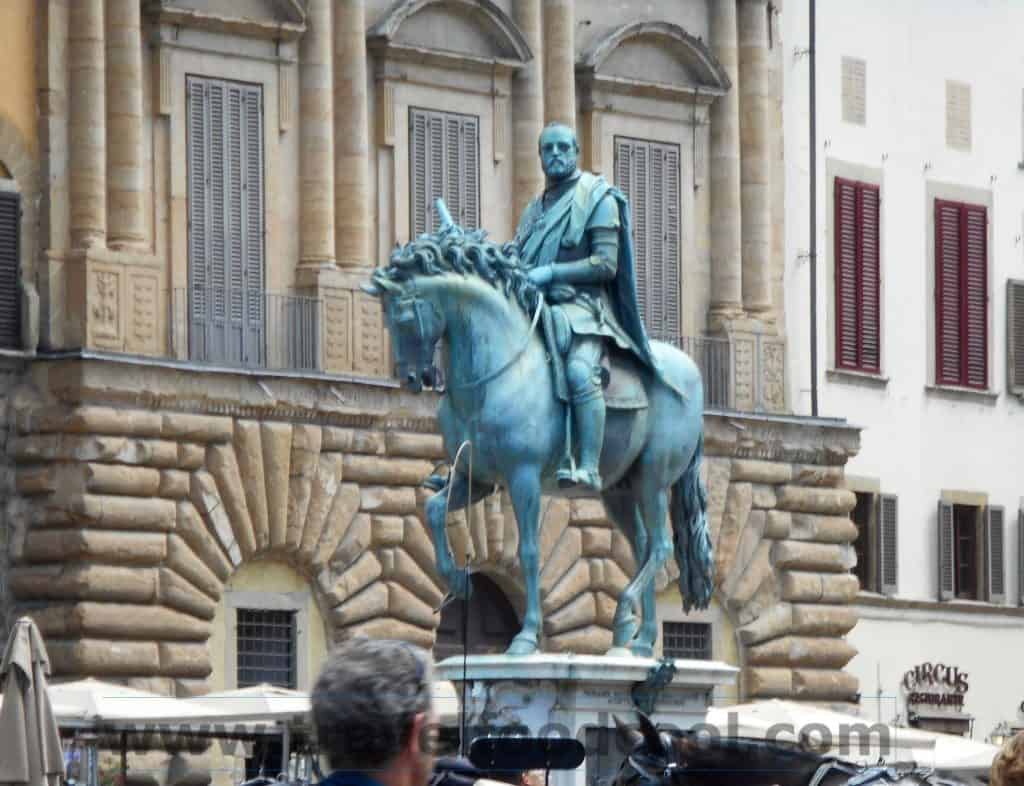
Giorgio Vasari started his career as an artist and fresco painter. He became known as an architect and writer. He is most famous for his Lives of the Most Excellent Painters, Sculptors, and Architects, considered the ideological foundation of art-historical writing (although the first book was said to be biased towards Florentine artists). His house, in his hometown of Arezzo, is now a museum. Stop by and see it next time you are going to the Arezzo Antique Market.

Since the Corridor stretches over 1 kilometer in length, you can imagine that there is quite a bit of wall space for art. As a result, the Corridor is now one of the largest portrait galleries in the world and displays over 800 self-portraits. The man responsible for this was a de’ Medici prince and also a cardinal. Cardinal Leopoldo started the portrait gallery in the Vasari Corridor.
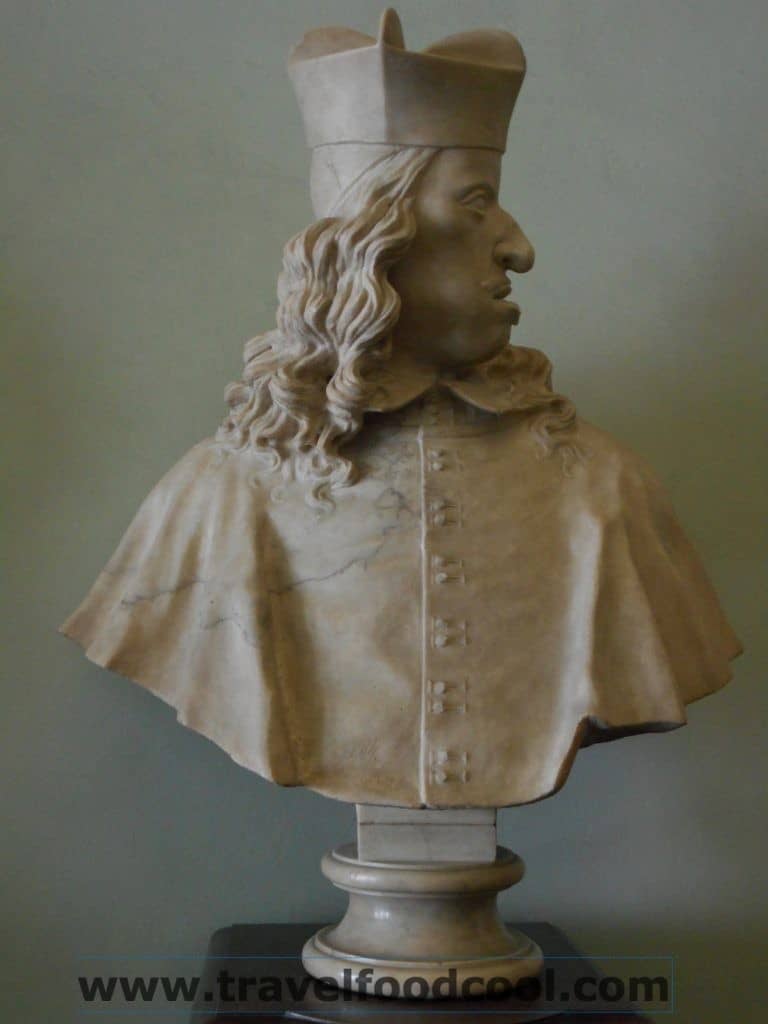
To get to the entrance of the Corridor, you must first enter the Uffizi and then walk up 125 stairs to a landing area where marble busts are displayed. The first bust is the Cardinal who turned the Vasari Corridor into the portrait gallery. The next bust is a rather French-looking bust of a rather large man – Gian Gastone de’ Medici – the last of the Grand Dukes of Tuscany. Looking at him you think, “how did he manage to climb all those stairs”? He didn’t. While the de’ Medici family was normally carried in a litter (including up the stairs), Gastone (1671 – 1737) was a reclusive alcoholic who kept to his room and refused to go out. The room, as you can imagine, was said to have quite an odour. Why do I consider Gastone an Influencer of the Vasari Corridor? He died without issue and left his estate to his sister Anna Marie Luisa de’ Medici.
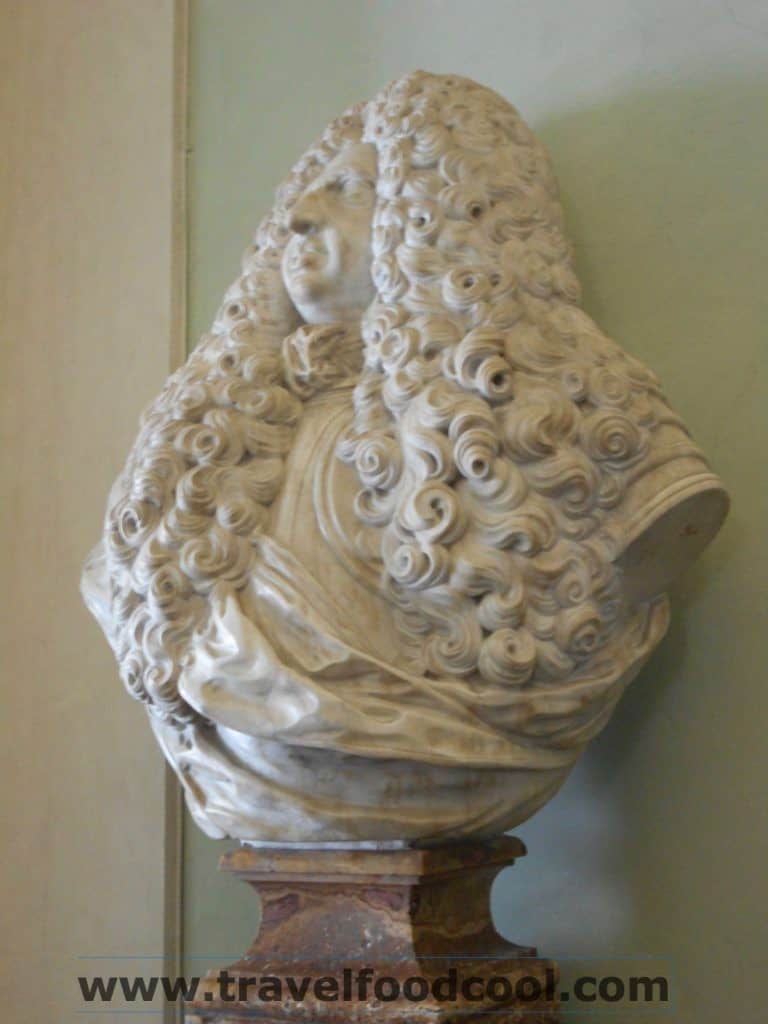
Anna Marie Luisa (1667 – 1743) is the real hero for art lovers and for Florence. When her brother died, he left Anna Maria Luisa his estate which included the family art collection. The next in line to inherit upon her death were relatives in Austria. Anna Maria Luisa knew that, on her death, the Austrian relatives would remove the art from her beloved Florence. So, in her will, she bequeathed the entire (extremely large – three centuries worth) art collection and the contents of the Uffizi, the Pitti Palace, and other villas, to the Tuscan State and stated that nothing from the collection could ever be removed from Florence. Sixteen years after her death (1759), the Uffizi was opened to the public. This one act ensured the future economy of Florence through tourism.
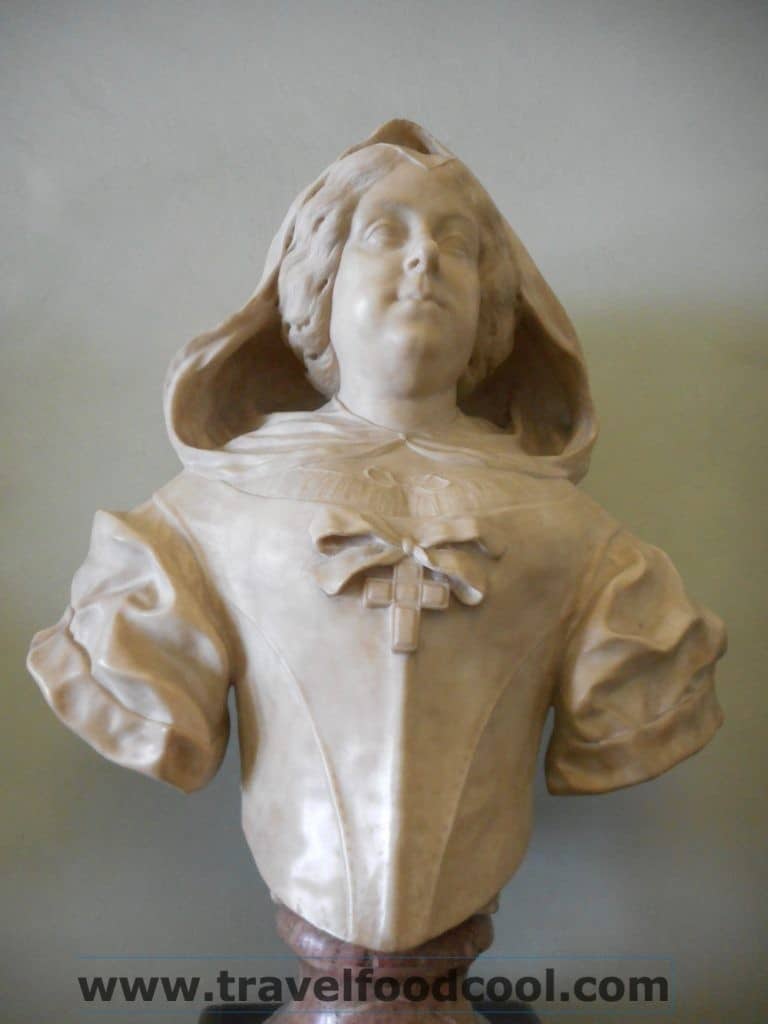
Before entering the Uffizi Gallery, you are greeted by the famous Bronzino painting of Eleanora of Toledo and her son Giovanni (although some reports say that this is his brother Garzia – both brothers died in 1562 of malaria). Eleanora purchased the Pitti Palace when the family of 11 children “outgrew” the Palazzo Vecchio. It was her new house, the Pitti Palace, that was linked to her old house, the Palazzo Vecchio, by the Vasari Corridor. The Palazzo Vecchio is connected to the Uffizi by another walkway. (I really like the painting by Bronzino, which is considered one of his greatest pieces.)
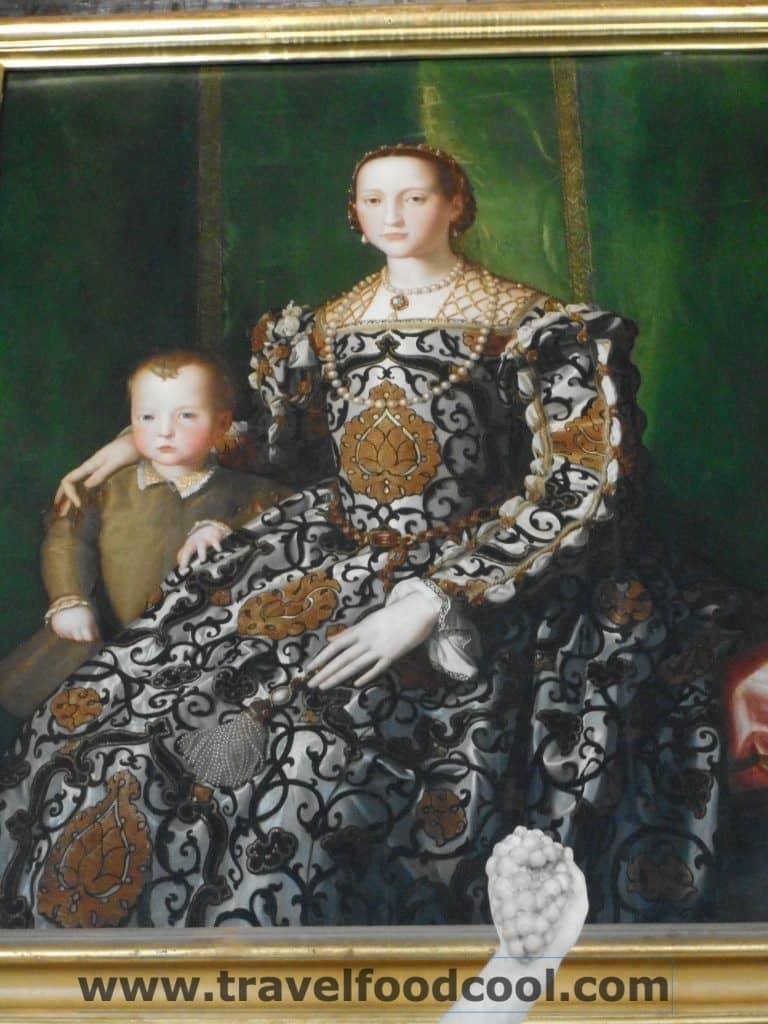
Following a stroll through the Uffizi (the offices) past magnificent painted coffered ceilings, portraits, and art, you finally come to the entrance of the Vasari Corridor. The door is locked and guarded and you can only enter if you are in a small (booked) group.
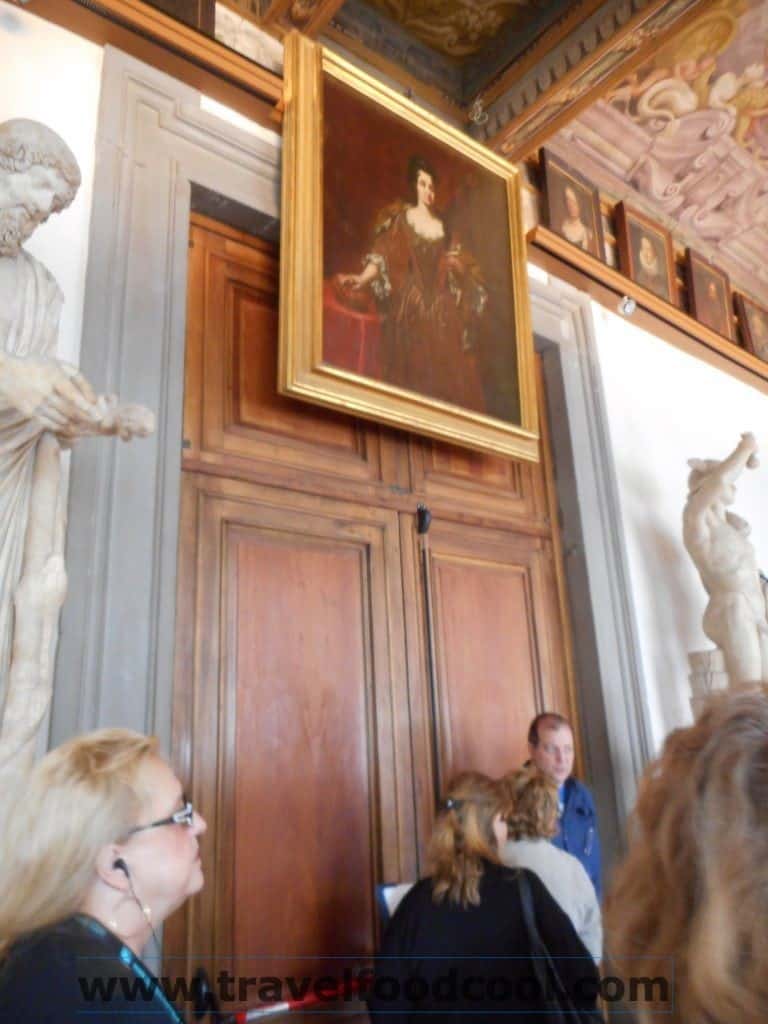
You walk down a flight of stairs and come to a landing area.
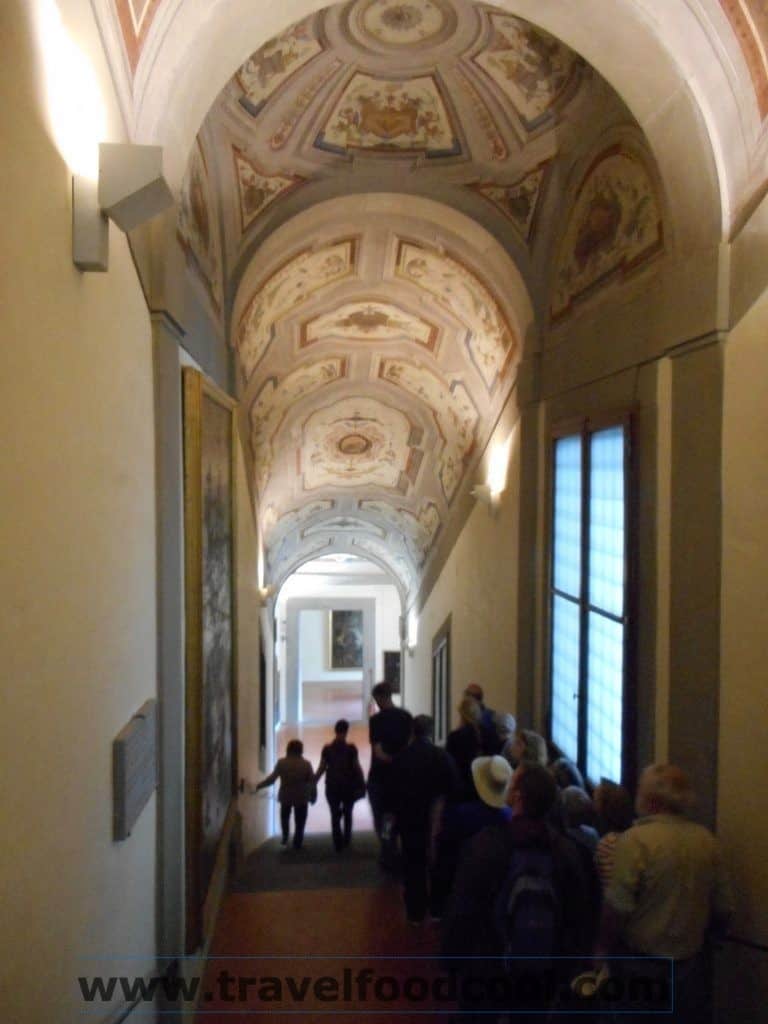
The landing area gives one a moment of pause, as you examine the two destroyed paintings on the wall. It was on this spot, under the Torre dei Pulci (the Tower), on May 27, 1993 at 1:00 a.m that the Mafia detonated a Fiat van filled with explosives. The explosion killed 6 people, injured 26 people, destroyed several paintings and caused millions of dollars of damage to the Tower, the Uffizi and the Corridor.
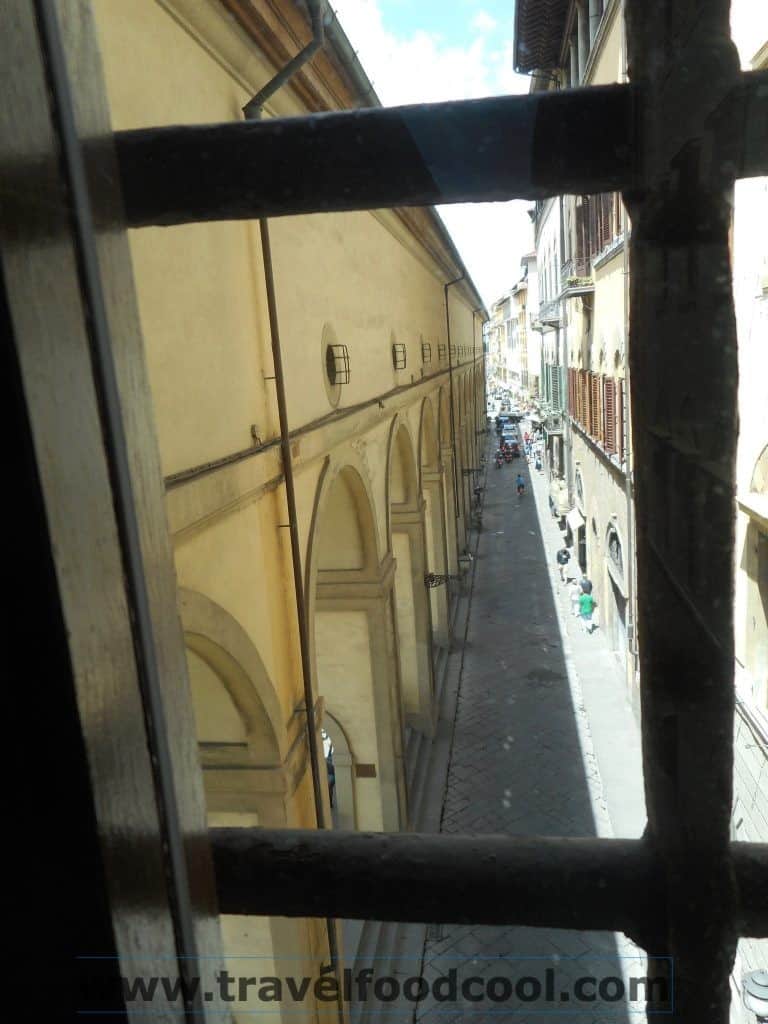
The damage to the Uffizi, a beloved treasure of Florence, was a turning point. Prior to this, many people of Italy downplayed the role of the Mafia and had lax attitudes towards the Mafia. After the collapse of the tower, the people of Florence rallied, just like during World War II, to help rebuild the Tower, the Uffizi, and the Vasari Corridor. The two paintings in the vestibule just outside of the start of the Corridor serve as a reminder of this terrorist act.
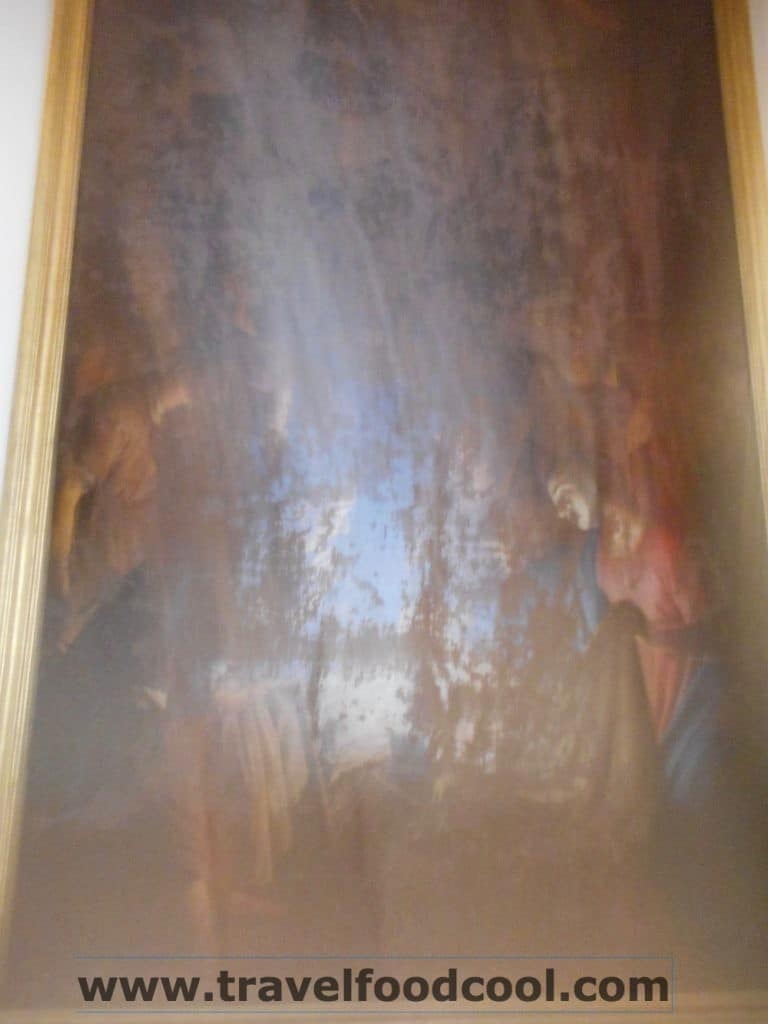
Speaking of shows of power, the Vasari Corridor itself is an architectural symbol of the power of de’ Medici family. The fact that the Corridor was completed in 5 months with little opposition – except the Mannelli family, who would not let their tower be destroyed and caused the Corridor to “go around” them – demonstrates the power that the de’ Medicis wielded.
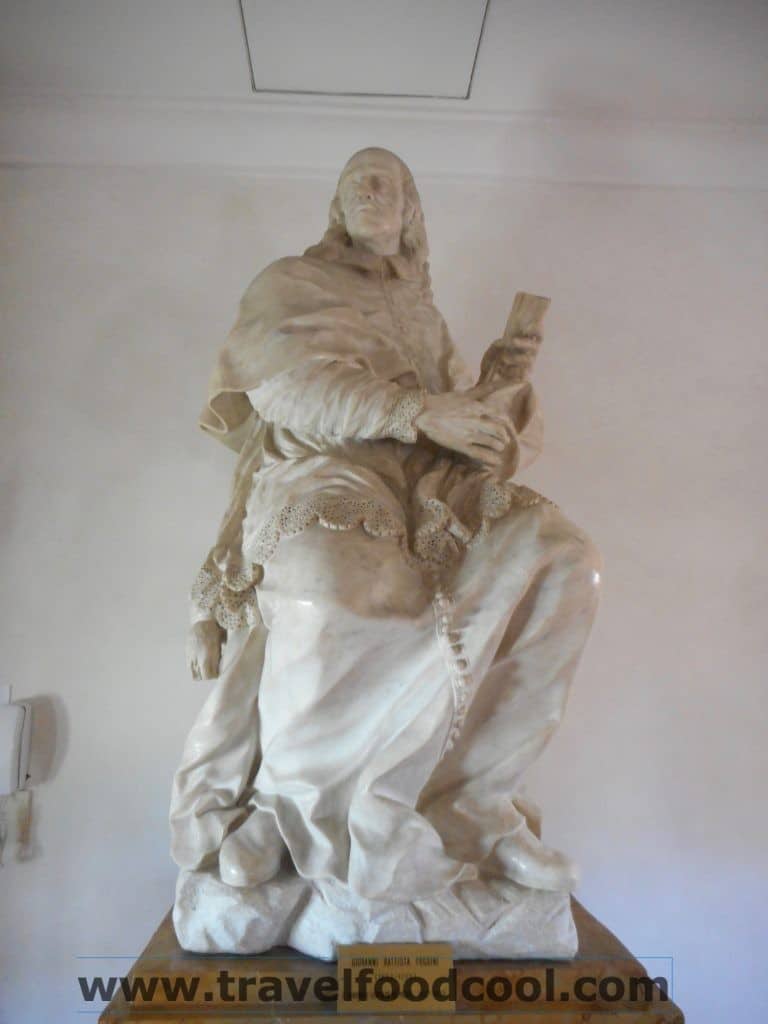
It is fitting that the statue of Cardinal Leopoldo shows the way around the Mannelli tower and links the older art pieces with the modern portraits.
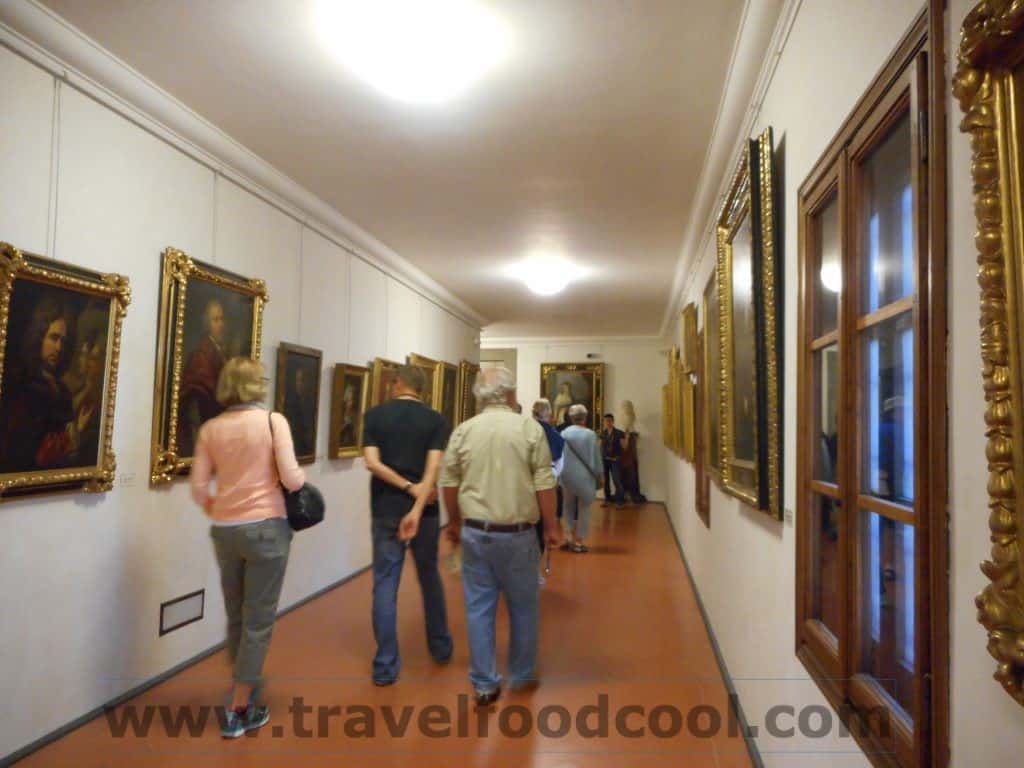
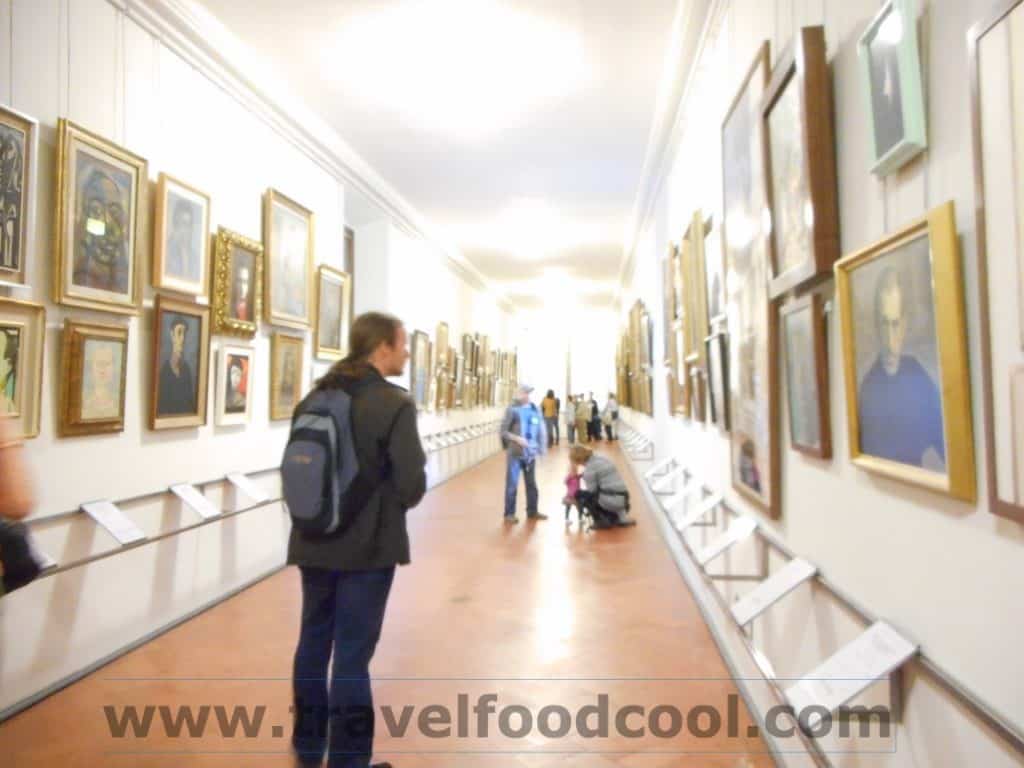
One last Influencer of the Vasari Corridor that I should mention is the new Uffizi Director, Eike Schmidt. He has announced that he would like to make the Vasari Corridor open to more people by removing the art and offering a lower priced ticket (this would be separate from admission to the Uffizi Gallery), stating that this will give visitors an “opportunity, not an obligation” to explore the corridor. If you would like to see the portraits in the Corridor, book your Corridor tours sooner rather than later.
If you would like to read more about the Vasari Corridor, please check out this post on The Vasari Corridor – Part 1 – The Tunnel.
Coming up next – The Vasari Corridor – Part 3 – The Artists.



Wow, thanks for taking me back, Elin!! My wife and I went to the Uffizi 11 years ago and it was the highlight of Florence.
Thanks! So glad to hear! Are you going back for a 12 year anniversary trip?